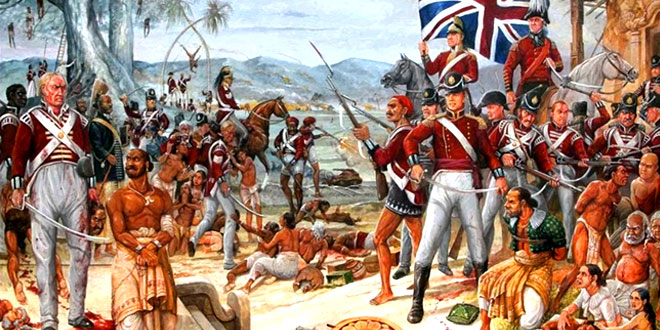Question: Why was the East India Company keen on expanding textile exports from India during 1760s?
Answer: The consolidation of East India Company power after the 1760s did not initially lead to a decline in textile exports from India. British cotton industries had not yet expanded and Indian fine textiles were in great demand in Europe. So the company was keen on expanding textile exports from India.
Question: “Before establishing political power in Bengal and Carnatic in the 1760 and 1770s, the East India Company had found it difficult to ensure a regular supply of goods for export. Give reasons.
Answer: The French. Dutch. Portuguese as well as the local traders competed in the market to secure woven cloth. So the weaver and supply merchants could bargain and try selling the produce to the best buyer.
Question:Who were Gomasthas?
Answer: They were the paid servants: the East India Company who use to supervise weavers, collect supplies and examine the quality of cloth.
Question:Why there were clashes between weavers and Gomasthas?
Answer: The new Gomasthas were outsiders, with no long term social link with the village. So they acted arrogantly, marched into villages with the police and punished weavers for delay in supply. So. there were reports of dashes between weavers and Gomasthas.
Question: “By I860, Indian weavers could not get sufficient supply of raw cotton of good quality.” Give reason.
Answer: When the American Civil War broke out and cotton supplies from the US were cut, Britain turned to India. As raw cotton exports from India increased, the price of raw cotton “hot up”. Weavers in India were starved of supplies.
Question: Name the European Managing agencies which controlled the large sector of Indian industries.
Answer: (i) Bird Heiglers and Co. (ii) Andrew Yule. (iii) Jardine Skinner and Co.
Question: When was the first cotton mill established in Bombay?
Answer: 1854.
Question: Name any four major centers of cotton textile of India during the colonial period.
Answer:
(i) Bombay – 1854
(ii) Kanpur – 1860
(iii) Ahmedabad – 1861
(iv) Madras – 1874
Question: Name any four entrepreneurs of India who set factories during colonial period.
Answer:
(i) Dwarakanath Tagore
(ii) Dinshaw Petit
(iii) Jamset Ji Nusserwanji Tata
(iv) Seth Hukumchand
Question: “Under the colonial era the Indian merchants were discriminated and space within which Indian merchants could function became increasingly limited”. Justify.
Answer: They were barred from trading with Europe in manufactured goods, and had to export mostly raw materials and food grains, raw cotton, opium, wheat and indigo – required by the British. They were also gradually edged out of the shipping business.
Question: What was fly shuttle?
Answer: It is a mechanical device used for weaving moved by means of ropes and pullies. It places the horizontal threads (called the weft) into the vertical? threads (called the warp). The invention of the fly shuttle made it possible for weavers to operate large looms and weave wide pieces of cloth.
Question: What was the impact of the First World War on the British industries?
Answer: After the war. Manchester could never recapture its old position in the Indian market. Unable to modernize and compete with the US. Germany and Japan, the economy of Britain crumbled after the war. Cotton production collapsed and exports of cotton cloth from Britain fell dramatically. Within the colonies, local industrialists gradually consolidated their position, substituting foreign manufactures and capturing the home market.
Question: Who was a jobber?
Answer: Jobber was an old and trusted worker employed by the Indian industrialists to recruit the new workers.
Question: During the first world war years industrial production in India boomed. Give reason.
Answer:
(i) Manchester imports into India declined as British mills were busy with war production.
(ii) Indian industries were also called upon to supply war needs ;jute bags, cloth for army uniform, tents and leather boots.
Question: What was the result of the import of Manchester cloth to India?
Answer:
(i) It ruined the cloth industry in India because the Manchester cloth was both cheap, showy and durable.
(ii) The weavers were forced to give up their ancestral profession of cloth weaving and had to work as laborers in urban areas.
Question: Name the provinces where most of the large-scale industries were located during the colonial period.
Answer: Bengal and Bombay
 Class Notes NCERT Solutions for CBSE Students
Class Notes NCERT Solutions for CBSE Students





